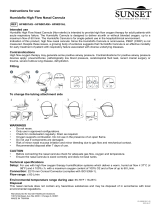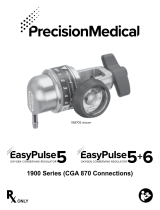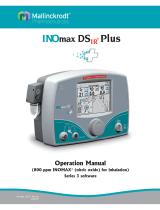Drive CH4808-L-BLUE is a medical device intended to be used to deliver supplemental oxygen to patients who need it. It is not intended for use with an endotracheal tube or tracheostomy. The device is equipped with a flow control knob that allows the user to adjust the flow of oxygen from 1 to 6 liters per minute. The device also has a pressure gauge that indicates the pressure of the oxygen in the cylinder. The device is powered by a 9-volt battery and can be used for up to 8 hours on a single battery. The device is lightweight and portable, making it easy to transport and use.
Drive CH4808-L-BLUE is a medical device intended to be used to deliver supplemental oxygen to patients who need it. It is not intended for use with an endotracheal tube or tracheostomy. The device is equipped with a flow control knob that allows the user to adjust the flow of oxygen from 1 to 6 liters per minute. The device also has a pressure gauge that indicates the pressure of the oxygen in the cylinder. The device is powered by a 9-volt battery and can be used for up to 8 hours on a single battery. The device is lightweight and portable, making it easy to transport and use.
















-
 1
1
-
 2
2
-
 3
3
-
 4
4
-
 5
5
-
 6
6
-
 7
7
-
 8
8
-
 9
9
-
 10
10
-
 11
11
-
 12
12
-
 13
13
-
 14
14
-
 15
15
-
 16
16
Drive CH4808-L-BLUE Owner's manual
- Type
- Owner's manual
- This manual is also suitable for
Drive CH4808-L-BLUE is a medical device intended to be used to deliver supplemental oxygen to patients who need it. It is not intended for use with an endotracheal tube or tracheostomy. The device is equipped with a flow control knob that allows the user to adjust the flow of oxygen from 1 to 6 liters per minute. The device also has a pressure gauge that indicates the pressure of the oxygen in the cylinder. The device is powered by a 9-volt battery and can be used for up to 8 hours on a single battery. The device is lightweight and portable, making it easy to transport and use.
Ask a question and I''ll find the answer in the document
Finding information in a document is now easier with AI
Related papers
-
Drive Medical CHAD Bonsai Velocity Pneumatic Oxygen Conserver Owner's manual
-
Drive Medical CHAD Bonsai Velocity Pneumatic Oxygen Conserver Owner's manual
-
Drive Medical CTOX-MN02 Owner's manual
-
Drive Medical Integrated OM-812 Bonsai Velocity Conserver Owner's manual
-
Drive Medical 535D-E-CF Owner's manual
-
Drive Medical 1025DS Owner's manual
-
Drive Medical 525DS-EW Owner's manual
-
Drive Medical 535D-2M6870 Owner's manual
Other documents
-
Drive Medical CHAD Evolution Electronic Oxygen Conserver Owner's manual
-
Drive Medical CHAD Evolution Motion Auto-Adjusting Oxygen Conserver Owner's manual
-
 SUNSET HEALTHCARE SOLUTIONS HFN001AS User manual
SUNSET HEALTHCARE SOLUTIONS HFN001AS User manual
-
Drive Medical CHAD Bonsai Velocity Pneumatic Oxygen Conserver Owner's manual
-
Invacare IOC100P User manual
-
Invacare IOC100P User manual
-
 Precision Medical EasyPulse5/5+6 Oxygen Conserving Regulator User manual
Precision Medical EasyPulse5/5+6 Oxygen Conserving Regulator User manual
-
 Precision Medical EasyPulse5/5+6 Oxygen Conserving Regulator User manual
Precision Medical EasyPulse5/5+6 Oxygen Conserving Regulator User manual
-
Invacare HF2PCM2KIT User manual
-
 Mallinckrodt INOMAX DSir Plus Operating instructions
Mallinckrodt INOMAX DSir Plus Operating instructions



















